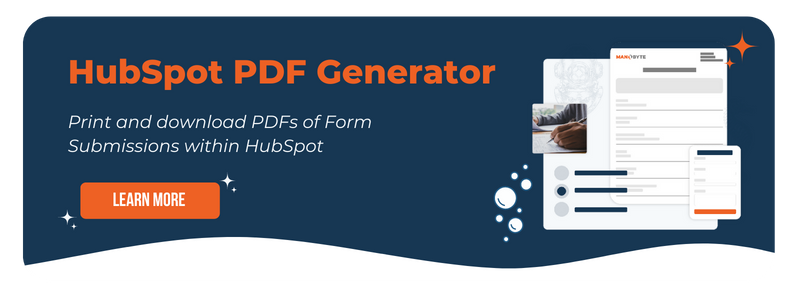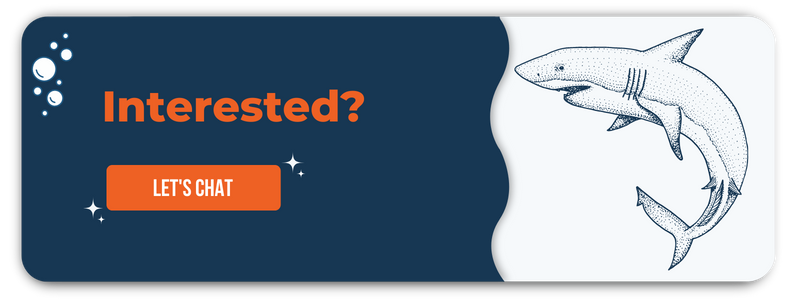How Inbound Marketing Works for Distributor Sales
Chelsea Carter

To begin identifying how to leverage inbound marketing in distributor sales, let's first define what these important terms mean in the world of distributor sales:
Distributors: These are the companies that purchase products or services and store them in their facilities before reselling those products or services before reselling them to a wholesale buyer. Distributors receive the preferential pricing from the manufacturer.
Distribution Sales Representatives: These are the designated salespeople who represent the manufacturer's brand to those wholesale distributors who they have built a relationship with. Typically, these reps are paid by the manufacturer and are divided up using a territory system. They usually answer questions about the product or service, make introductions, and support the sales process for the distributor. When the distributor grows their sales numbers with the manufacturers product or service, the distribution sales representative will then receive a bonus. So, while they don't get the direct "close" of the sale, they play a role and are rewarded for driving more sales for the reselling companies.
How exactly does inbound marketing work for distributors?
At its core, inbound marketing works through carefully crafted and informative content that is emailed out or published on your website and blog and promoted through social media channels. Utilizing quality information that meets the needs of your audience by leveraging important keywords or search terms, your content becomes visible to your target customers, drawing them in so you are the vendor they select to purchase from. It works by attracting visitors, educating and converting them into leads, closing the business and delighting them over and over again so they continue to do business with you. To drive distributor sales, you just have to expand your approach to ensure you are meeting the content needs of the end users, the sales reps, as well as the distributor. So creating content that resonates with both those stakeholders is an important part of your inbound initiatives.
What will I need?
Inbound marketing is a comprehensive approach to marketing, so you can’t simply have your sales team think of a list of keywords then blast them all over your website and expect the leads to come rolling in. Google and other search engines have very complex algorithms that work to ensure their results are delivering what the searcher desires and not just junk text. Because of this, you need to implement a cohesive inbound marketing strategy specific for distributor sales that uses the following items:
- HubSpot Software: This is the tool that brings your entire inbound marketing process together. It will help you from the design of your site to understanding search terms of relevance, managing all your content, and also tracking your results. It’s the engine that keeps inbound marketing moving.
- Website Design: Your website shouldn’t just provide information to your customers, it should serve as the central hub of getting leads to your business. It should represent your company in an easy-to-use and visually pleasing way. If your site is just sub-par right now, a redesign that includes calls-to-action, a blog and landing pages will be a great starting point.
- Search Engine Optimization (SEO): As we have been discussing, SEO and keywords are an important element of your new marketing initiatives, but they aren’t the only component. HubSpot will help you to identify the right keywords that you can use as the building blocks for your content.
- Offers, CTA’s and Landing Pages: These will be the elements that draw your customers into your website. Calls-to-actions encourage them to do something, which takes them to a landing page where they give you their contact information (making it a lead for your sales team now!) in return for an offer – which could be something like an informative distributing eBook, an infographic or a helpful guide.
- Lead Nurturing Email Workflows: You know those emails you get from businesses you like that seem to speak right to you? Well, that’s what your customers want to see, too. These workflows take the viewer and lead them through a series of emails that speak to them based on their activity and ultimately – leads them to buy from you.
- Content: These are the offers you have for your customers that will provide them with the information they are looking for. Basic examples of common content include informational guides, videos, eBooks, infographics, blog posts. For distributing and manufacturing companies, this idea can shift slightly to best meet the needs of the customer.
- Social Media: Your social media presence is a key component of inbound marketing. Although many distributors might argue that “their buyers aren’t on social media,” it’s simply not true. With over 1 billion people on Facebook and 100 million on Instagram alone, your customers and reselling businesses are on there, and your business should be too.
- Buyer Persona’s: These are characters you develop to build your content toward. They are the fictional representation of your customer – from their habits, work/life balance and background, you need to create a story and image of who your customer is so you know who you’re trying to market toward.
- Reporting: If you are investing all this time, energy and money into a new marketing process, you want to know how it’s working, right? Of course. Thankfully HubSpot helps with this too, providing detailed reports and information to help you decide what is working - and what's not.
But what do I need to do to get started?
You have a couple of options: you can delegate or hire an internal team to manage the inbound process, or you can work with an inbound marketing agency to walk you through the implementation and management process. For many distributors, they simply don't have the extra resources to allocate to the implementation of a new marketing process, so using an inbound marketing agency makes things a lot easier and more effective.
Finally, keep in mind that content marketing is not meant to replace your sales team, inbound marketing works best for distributor sales when you use these items as well as some traditional methods. This way, you are truly meeting each potential customer at their specific spot in the sales cycle.
Looking to deploy inbound marketing to, through, for, and with your channel partners? Let's chat.
Ready to Dive In?
Work with our team of Business Process experts and watch us take manual clunky systems, tech stacks, and processes and turn them into tailored, intelligent workflows that deliver business outcomes.



